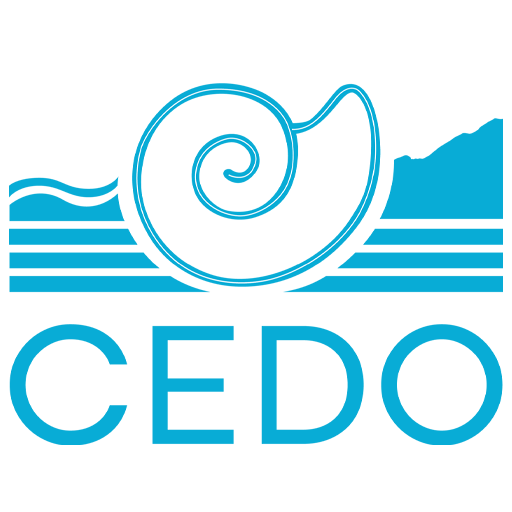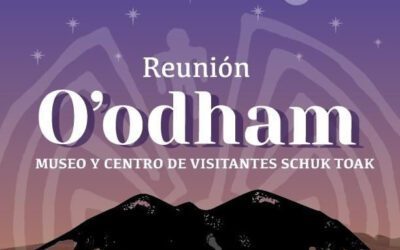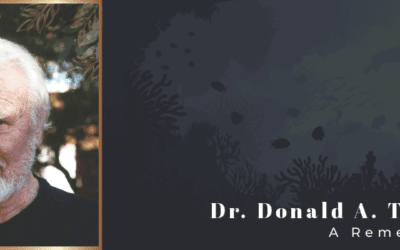[vc_row][vc_column][vc_separator][vc_column_text]By:
Nélida Barajas Acosta, Executive Director, CEDO Intercultural
Hem Nalini Morzaria-Luna, Associate Researcher, CEDO Intercultural
Sarah Mesnick, NOAA Researcher
Miguel Ángel Cisneros Mata, INAPESCA Researcher.[/vc_column_text][/vc_column][/vc_row][vc_row][vc_column][vc_column_text]The northern Gulf of California, recognized for its biological and cultural diversity, was declared a World Heritage Site[1]. Petroglyphs from over 12,000 years ago document the passage of the ancestral nomadic populations of the Tohono O’odham and Cucapá ethnic groups who enjoyed the species that the sea and the desert had to offer[2].
Archaeological studies show that the Cucapá used the wetlands intensively, captured and processed marine resources, and participated in exchange networks with other coastal ethnic groups. The Cucapá were hunter-gatherer-fishermen and they offer the first evidences of the cultural and traditional feeding practices of the humans in the region[3],[4].
With the passing of time, in the 1920s, the agro-industrial and fishing development of the northern Gulf of California brought new inhabitants to the region. The region came to be considered one of the main fishing areas in Mexico, and catches contributed up to 20% of the national fishing production. At the same time, new ways of preparing and consuming seafood and desert products were developed. These new approaches emphasized the value of commercial species[5],[6]
Currently the regional economy depends heavily on fishing, mainly artisanal fishing. Fishery products are traded in local, regional, national and international markets. This translates into an opportunity to savor the products of the northern Gulf region and appreciate the importance of its resources, and at the same time an opportunity to protect and conserve our oceans. Our intention is to chart a path towards sustainability by promoting mindful consumption, food security and sustainable and fair development for the communities of the region. In this way we can make a substantial contribution to ensuring that coastal communities prosper and have access to local, fresh, and quality protein sources.
The future we want[7], the future we work for
At the Intercultural Center for the Study of Deserts and Oceans we take the principles established in the 2030 Agenda and the United Nations Sustainable Development Goals (SDGs)[8] in all our lines of work as a guide to fulfill our mission:
To foster vibrant communities and resilient ecosystems in the Gulf of California and other ecoregions by bringing together people, knowledge, and solutions.
For more than 40 years, CEDO has worked in the Upper Gulf of California, where the Sonoran Desert meets the Sea of Cortez. Our experiences, lessons, and solutions to the challenges of this region are anchored in two fundamental premises: 1) working with local people and 2) developing strong scientific support. This has allowed us to create a solid basis for decision-making and inclusive actions for ecosystem conservation and community well-being (table 1).
Table 1. CEDO priority programs in fisheries 2005-2020
| 2005 The PANGAS Project: Artisanal Fisheries of the Northern Gulf of California: Environment and Society[9]
The purpose of this paper is to generate and compile scientific, biological and oceanographic information, combined with the knowledge of fishermen, to improve the management of coastal fishing for 14 fisheries in the Gulf of California. 2014 Environmental Impact Assessments for coastal fisheries in the upper Gulf of California[10], analyzes the environmental impacts of 906 vessels that catch 27 commercial species in 9 fisheries in three communities and impact about 2000 fishermen in the Upper Gulf. 2019 Coastal Marine Spatial Planning and Comprehensive Management of the Puerto Peñasco – Puerto Lobos Biological and Fishing Corridor[11], includes analysis of 796 vessels in 6 communities, and proposes four tools for the integral management of coastal fishing: 1) Regularizing fishing efforts; 2) Rights-based management areas for crab, Chinese black snail and Chinese pink snail; 3) A network of 26 fishing refuges for 11 commercial species in 6 communities; and 4) Catch quotas. 2020 Fisheries Improvement Projects (FIPs), Fair Trade, Value Index Recovery, and Community Well-being. CEDO works throughout the entire consumption chain—fish producers to government, processors, marketers, and researchers to improve fishing practices to fishing regulations, decision-making, and product traceability to points of sale. The goal is fair income and satisfacotry working conditions, building equitable and committed networks, and guaranteeing the sustainability of marine resources. |
In a multidisciplinary and multisectoral manner, with a comprehensive approach and considering the goals of SDG 14 “Underwater Life”, CEDO seeks to protect and sustainably manage marine and coastal ecosystems to maintain the good health and productivity of the Upper Gulf California (Figure 2).
We work with a collaborative approach in five strategic lines:
- Sustainable fisheries and markets.
We promote effective fishing regulation instruments, eradicating excessive and illegal fishing, unreported and unregulated fishing, and destructive fishing practices.
- Fisheries management.
We promote the development of fisheries regulations and other scientifically based instruments in order to restore the populations of marine resources of importance to the region.
- Fair markets. We promote access to markets that pay fair prices for the resources produced by sustainable fishing and aquaculture in the Upper Gulf.
- Alternative economic activities. We develop new economic alternatives that benefit artisanal fishermen and ecosystems through the sustainable management of resources, nutrition, waste management, tourism, and processes that add value to the production.
- Capacity Building. We increase scientific research capacity and the possibility of modernizing adequate fishing technologies, to generate a local strengthened capacity for sustainable development.
 Figure 2: Image: almagraculturaynaturaleza
Figure 2: Image: almagraculturaynaturaleza
CEDO works with fishing communities, governments, academic institutions and other civil society organizations to encourage residents of the Upper Gulf to live better, to see themselves as part of healthy ecosystems and a fair and inclusive social fabric that leaves no one behind.
We invite you to join us and learn about our food sources, to recognize that biodiversity nourishes us, to learn about the origin of production practices (farming or fishing) and the way in which people live and communities produce our food (Figure 3), so that together we can promote understanding of the links in the value chain of our food production as a fundamental practice to ensure sustainable development[12].
Figure 3: In the seas of Mexico about 2250 species of fish are known; of these 1 in 4 are used commercially. More than half of the commercial species are caught in the Mexican Pacific and the Gulf of California. Here are the 50 species that are most consumed.
[1] http://world-heritage-datasheets.unep-wcmc.org/datasheet/output/site/islands-protected-areas-of-the-gulf-of-california/
[2] https://simec.conanp.gob.mx/pdf_libro_pm/2_libro_pm.pdf
[3] Delgado-Ramírez, C.E. 2017. Una aproximación a la cultura cucapá. Cuicuilco. Rev. Cienc. Antropol. 24(69): 265-269. Disponible en http://www.scielo.org.mx/scielo.php?script=sci_arttext&pid=S2448-84882017000200265
[4] Luque-Agraz, D y E. Gómez. 2007. La Construcción de la región del Golfo de California desde lo ambiental y lo indígena. Ra Himhai 3(1): 83-116. Disponible en http://revistas.unam.mx/index.php/rxm/article/viewFile/6912/6432
[5] López-Sagástegui, C., I. Mascareñas-Osorio, B. Erisman, M. Moreno-Báez, V. Jiménez-Esquivel, O. Aburto-Oropeza. 2015. Comparing two fishing communities in the Upper Gulf of California. DataMares. InteractiveResource. http://dx.doi.org/10.13022/M33S3C
[6] Cisneros-Mata, M.A. 2001. Pesca y manejo pesquero en el Golfo de California. Estudios Sociales 11: 57-69.
[7] Párrafo 158 de la Convención de las Naciones Unidas sobre el Derecho del Mar. La cual constituye el marco jurídico para la conservación y la utilización sostenible de los océanos y sus recursos.
[8] Visión de un mundo más justo, más próspero, pacífico y sostenible, donde nadie se quede atrás y, al mismo tiempo, todos gocen del crecimiento basado en derechos, equitativo e inclusivo, promoviendo el crecimiento económico sostenido, inclusivo y sostenible, así como el empleo pleno y productivo y el trabajo decente para todos garantizando la conservación de los recursos naturales del planeta.
[9] Cudney-Bueno, R. y P. J. Turk-Boyer. 1998. Pescando entre mareas del Alto Golfo de California. Una Guía sobre la Pesca Artesanal, su Gente y sus Propuestas de Manejo. Centro Intercultural de Estudios de Desiertos y Océanos A.C. Puerto Peñasco, Sonora. 166 pp.
[10] Valdivia-Jiménez, P. et al. 2015. Manifestación del Impacto Ambiental para la Pesca Ribereña Responsable en la Reserva de la Biosfera Alto Golfo de California y Delta del Río Colorado. Una herramienta de planeación y manejo ecosistémico participativo. Logros, retos y lecciones aprendidas. Centro Intercultural de Estudios de Desiertos y Océanos, A.C. Puerto Peñasco, Sonora. 27 pp.
[11] Centro Intercultural de Estudios de Desiertos y Océanos. 2019. Un Nuevo Rumbo hacia el Manejo Ecosistémico y Pesquero en México: Planeación Espacial Marino-Costera y Manejo Integral del Corredor Biológico y Pesquero Puerto Peñasco – Puerto Lobos, Sonora. Turk Boyer, P. J. & Valdivia-Jiménez, P. A. (eds.). CEDO Intercultural, Puerto Peñasco, Sonora, México. 24 pp.
[12] Value Chain, Morrisey 1985[/vc_column_text][/vc_column][/vc_row][vc_row][vc_column][vc_cta h2=”Support Us” h4=”If you are interested in supporting the education and conservation actions that CEDO Intercultural does out in the Sonoran Desert and Upper Gulf of California, click on the button and join the CEDO Intercultural family.” style=”3d” color=”blue” add_button=”bottom” btn_title=”MAKE YOUR DONATION HERE” btn_color=”peacoc” btn_link=”url:https%3A%2F%2Fwww.classy.org%2Fgive%2F287651%2F%23!%2Fdonation%2Fcheckout||target:%20_blank|”][/vc_cta][/vc_column][/vc_row][vc_row][vc_column][/vc_column][/vc_row]










0 Comments